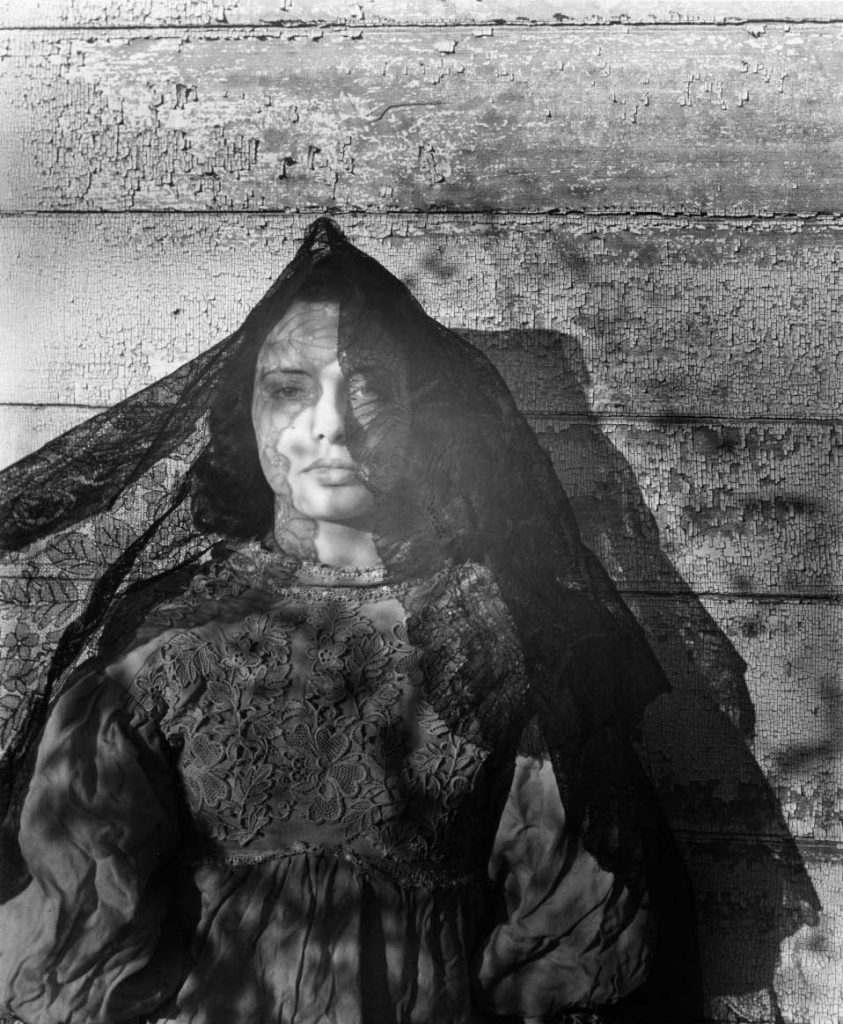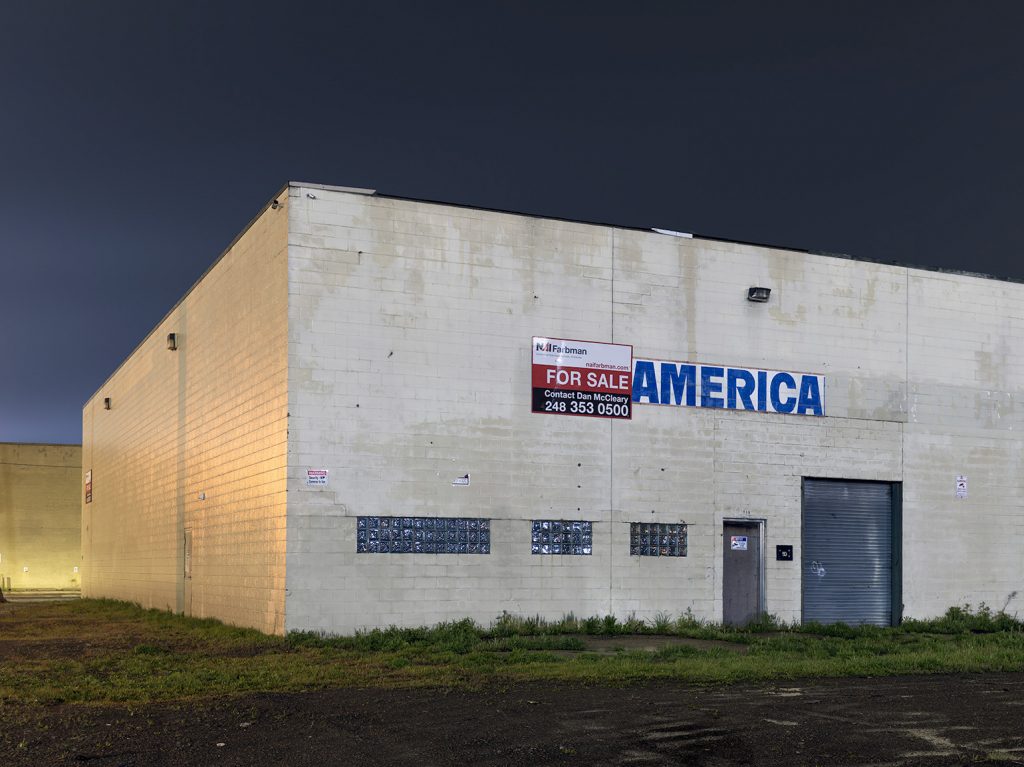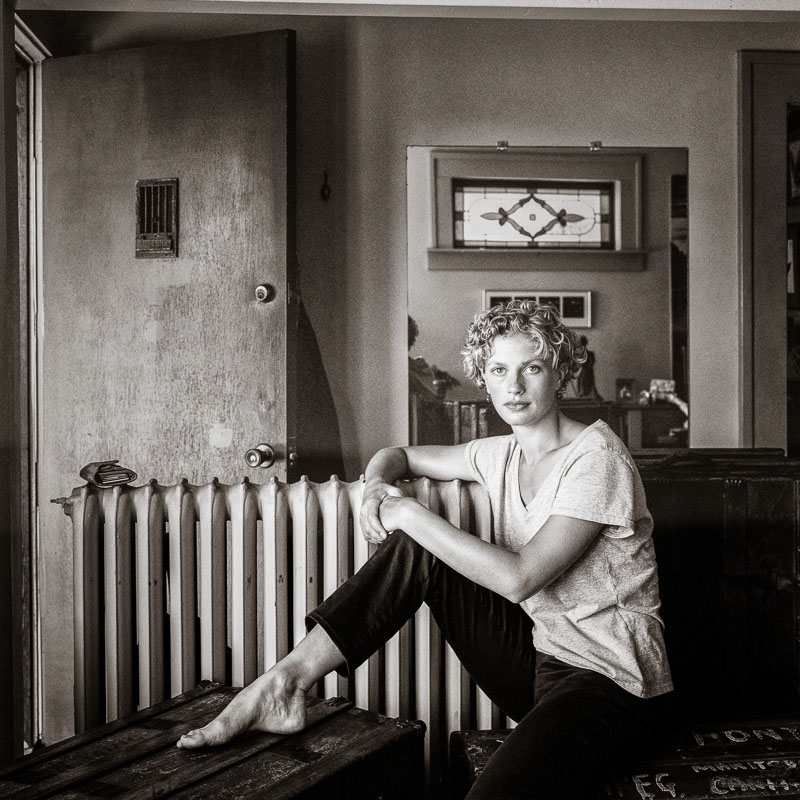In: large format photography

Clarence John Laughlin | Southern Gothic
March 12, 2024Clarence John Laughlin (1905 – 1985) | Southern Gothic
Laughlin was a New Orleans photographer : he’s best known for his black and white, sometimes uncanny and disquieting images of the Southern United States. Considering the ethereal and dream like quality of many of his scenes, he’s sometimes spoken of as the father of American Surrealism. In considering his photographs, the ‘original’ definition of Surrealism from André Breton was to “resolve the previously contradictory conditions of dream and reality into an absolute reality, a super-reality.” Less pretentiously (Frida Kahlo did refer to Breton as being among the ‘art bitches’ of Paris, whom she disdained, ahem), in the work of Laughlin, one can see that he was attempting to both re interpret and define his own memories and experiences of a site, while also employing the place and people within it, that is rife with contested narratives.
I tried to create a mythology from our contemporary world. This mythology — instead of having gods and goddesses — has the personifications of our fears and frustrations, our desires and dilemmas.
(Clarence John Laughlin)
For those unfamiliar : ‘Southern Gothic is an artistic subgenre…heavily influenced by Gothic elements and the American South. Common themes of Southern Gothic include storytelling of deeply flawed, disturbing, or eccentric characters who may be involved in hoodoo [or the large sphere of the occult], decayed or derelict settings, grotesque situations, and other sinister events relating to or stemming from poverty, alienation, crime, or violence.’ (from here)
As darkness set in, the mist drifted off the deep acreage of sugarcane that flattened back to the surrounding slough and mire. Blooming loblolly bushes, palmettos, and thick fields sprouting a type of flower he’d never seen before filled the evening air with an assertive but sweet fragrance.
The Nail family lived in an antediluvian mansion that had been built long before the separation of states. He saw where it had been rebuilt after Civil War strife and he could feel the dense and bloody history in the depths of the house. He glanced up at a row of large windows on the second floor and saw six lovely pale women staring down at him.
————————
A tremendously wide stairway opened to a landing where colonnades rose on either side abutting the ceiling. He could see the six sisters huddled together at the banister curving down from the second floor, all of them watching him, their hair sprawled over the railing. He waved, but only one of them responded, lifting her hand and daintily flexing her fingers.
(Tom Piccirilli, Emerald Hell)
The book I quote above takes place primarily in Louisiana – where the artist who’s the focus of this essay was born, and a place, whether in terms of New Orleans (his birthplace) or the greater Southern Reach (a term I borrow from another author), that defined his aesthetic. In that book, there are many dark characters that are pervasive within Southern Gothic horror that’s a wide genre, one which I’ve been quite interested in of late. The aforementioned Nail family’s daughters suffer under a ‘curse’ where they cannot speak, and seem to move about the massive manse like apparitions, veiled and almost insubstantial, like a breeze accentuated by their long dresses and hair (like so many lamenting female ghosts of the South, and elsewhere).
Another player in Emerald Hell is known only as ‘the walking darkness’ or ‘Brother Jester’ : a former evangelical preacher who, after surviving an attempt made on his life, wanders the highways and byways of the state, leaving human wreckage in his wake. A later day incarnation of Robert Mitchum’s ‘man of god’ in the film Night of the Hunter (1955), perhaps. I am also reminded of some of the desolate – but drenched in histories and stories, almost like a stain on the ground – landscapes from the first season of True Detective, which is another iteration of the essence of the Southern Gothic.
One could imagine Laughlin’s images as characters and tableaux for such a chronicle. In this sense, Laughlin is a storyteller, an historian, just like Michael Lesy, who took us on a Wisconsin Death Trip…
Ghosts exist for a purpose. Unfinished business, delayed revenge, or to carry a message. Sometimes the dead can go to a lot of trouble to bring a desperate warning of some terrible thing that’s coming.
Whatever the reason, don’t blame the messenger for the message.
(Simon R. Green, Voices from Beyond)
I attempt, through much of my work, to animate all things—even so-called ‘inanimate’ objects–with the spirit of man….the creative photographer sets free the human contents of objects; and imparts humanity to the inhuman world around him.
(Clarence John Laughlin)
Born in Lake Charles, Louisiana, Laughlin had a difficult childhood, and this – in tandem with his ‘southern heritage’ and literary interests – are touchstones for his work. The family moved to New Orleans in 1910 after further economic hardship, with his father working in a factory in the city. A quiet, introverted child, Laughlin had a close relationship with his father whose encouragement – especially in terms of Laughlin’s interest in literature – was important to his development as an artist. His father’s death in 1918 affected him greatly : the dark, funerary, epitaphic nature of much of his work, perhaps, echoes this loss.
Laughlin never completed high school, but was a “highly literate man. His large vocabulary and love of language are evident in the elaborate captions he later wrote to accompany his photographs.
Laughlin discovered photography when he was 25 and taught himself how to use a simple 2½ by 2¼ view camera. He began working as a freelance architectural photographer and was subsequently employed by agencies as varied as Vogue Magazine and the US government. Disliking the constraints of government work, Laughlin eventually left Vogue after a conflict with then-editor Edward Steichen. Thereafter, he worked almost exclusively on personal projects utilizing a wide range of photographic styles and techniques, from simple geometric abstractions of architectural features to elaborately staged allegories utilizing models, costumes, and props.” (from here)
From the High Museum of Art in Georgia (the accompanying text for a retrospective of Laughlin’s work) : “Known primarily for his atmospheric depictions of decaying antebellum architecture that proliferated his hometown of New Orleans, Laughlin approached photography with a romantic, experimental eye that diverged heavily from his peers who championed realism and social documentary.”
More about his work and life can be enjoyed here and here : and perhaps, while perusing these images, consider listening to another Southerner – Johnny Cash – and his song The Wanderer, that also offers (ironically, considering the title) a place to stand, intertwined with histories both personal and more public, when considering the photographs of Clarence John Laughlin.
~ Bart Gazzola
Read More
Dave Jordano | For Sale – America, Westside, Detroit, 2020, from his A Detroit Nocturne Series
March 2, 2023Dave Jordano | For Sale – America, Westside, Detroit, 2020, from his A Detroit Nocturne Series
In the West, the past is very close. In many places, it still believes it’s the present. (John Masters)
Speramus meliora; resurget cineribus | We hope for better things; it will arise from the ashes. (City of Detroit’s motto)
The city makes you; in a million little ways it makes you, and you can’t unmake yourself from it. (Craig Davidson, Cataract City)
Detroit is nothing if not a physical site of contested narratives: having lived in Windsor – Detroit for a half dozen years, the mythology and the reality of that city was something I was exposed to as I was just beginning to mature as an artist and writer, and that city (whether through the Detroit Institute of Arts or the stereotypes of the rust belt wonderlands, the legacy of the riots and so much malfeasance on the part of supposed stakeholders that layer ruin upon ruin) played a large part in my development. Eight Mile Road is not just a song by Eminem, but a real place, with real people, to me.
It’s unsurprising to find out that Jordano is from Detroit: his portraits of the city suggest an affection and an affinity that is more personal, and that he connects with his subjects – whether people or places – in a manner that is more gentle, despite the harshness of the locus he captures, often being abandoned, or the stark industrial lights that help define his scenes. Or perhaps it’s more like one of my favourite books about place and memory, where Craig Davidson talks about how “the most awful thing about living as an adult on the same streets where you grew up? It’s so easy to remember how perfect it was supposed to be. Reminders were always smacking you in the face. Good things happened—sure, I knew that. They just happened in other places.”
Jordano’s own words about this series are as follows: “I chose to make these images at night not only to put more emphasis on their surroundings, but also because I wanted to introduce a moment of quiet and calm reflection. These nighttime landscapes seem unfamiliar and therefore provoke contemplation. Pieces of the past, present, and future are rendered here to be carefully considered. They are, after all, the physical evidence of the city where we once carved our collective ambitions and lived out our dreams.”
I must inject more words – to augment or challenge Jordano’s own – from Craig Davidson’s Cataract City here: “Most of us in Cataract City were hard because the place built you that way. It asked you to follow a particular line and if you didn’t, well, you went and lived someplace else. But if you stayed, you lived hard, and when you died you went into the ground that way: hard.”
Much more of Jordano’s work can be enjoyed at his site as well as on Instagram.
His extensive body of work – under the title of A Detroit Nocturne – can be viewed here.
~ Bart Gazzola
Read More
The Great Texas Road Story | Stephen Hood
February 25, 2023The Great Texas Road Story | Stephen Hood
IG: @thegreattexasroadstory
https://www.thegreattexasroadstory.com/
I refuse to remember the dead.
And the dead are bored with the whole thing.
But you — you go ahead,
go on, go on back down
into the graveyard,
lie down where you think their faces are;
talk back to your old bad dreams.
(Anne Sexton, A Curse Against Elegies)
Well, I see your light’s still on, so I guess you must be out there. It’s okay if you don’t want to talk, you know. I don’t want to talk either, sometimes. I just like to stay silent. (Nastassja Kinski | Jane Henderson, from the film Paris, Texas)
The scenes that make up The Great Texas Road Story are cinematic. This is not just the nature of the vignettes captured, but that encountering this work on IG, it is like a continuing tale, with missives ‘sent’ to us, like an ongoing conversation or ‘postcards’ in a continuing narrative….
They have a quality of scouting locations for a film, but I will admit that I’m bringing in my subjective response, again.
Looking at some of these, I’m – obviously, due to the title of the endeavour – reminded of the fine cinematography of the film Paris, Texas, by Robby Müller. But I’m also reminded of the television series Carnivàle, where a travelling carnival trudges across the United States amidst the arid dustiness and despair of the Dust Bowl Depression. Like the moments photographer Stephen Hood presents in The Great Texas Road Story, the episodes in that series are named after the small towns they traverse – and it all starts in Marfa, Texas, in an odd synchronicity to Hood’s travels around Texas for this project. Looking at the site for The Great Texas Road Story, empty places like Spur and Snyder might be Marfa – or vice versa.
And in the end, these places – despite their evocative physical presence captured by Hood – are also characters in a story, repositories for memories and ideas both personal and more public.
“The Great Texas Road Story is an ongoing photography project devoted to the authentic small Texas town. I aim to continue to artistically capture the places in Texas I find compelling and to share that work here.
This photography project began organically in June 2020, when suddenly, I had to get out of town with my girlfriend, as we hadn’t left our tiny Austin apartment in months, and we needed to do something. Had to go. So we booked a campsite at the state park and headed out west to camp in the Davis Mountains near Marfa. A good ole Texas road trip (soothes the soul) was soon underway.
Our first stop was San Angelo, where we saw a porcupine. I brought an old camera and started photographing the landscape of Texas. I hadn’t picked up a camera in months, but from then on, we were on the road every other weekend documenting all of the small towns along the way.
I only moonlight as a Texas documentarian…It is in my spare time that I lovingly chronicle a disappearing Texas.” (Stephen Hood)
That’s an excerpt of Hood’s description of this work, and more of his images can be seen here: but you’ll be able to enjoy more of these moments if you give The Great Texas Road Story a follow on Instagram here.
~ Bart Gazzola
Read More
Krydor, SK | Danny Singer, 2014
February 17, 2023Krydor, SK | Danny Singer, 2014
I would walk to the end of the street and over the prairie with the clickety grasshoppers bunging in arcs ahead of me, and I could hear the hum and twang of wind in the great prairie harp of telephone wires. Standing there with the total thrust of prairie sun on my vulnerable head, I guess I learned — at a very young age — that I was mortal.
W. O. Mitchell, Who Has Seen The Wind
I first encountered Danny Singer’s work in an exhibition in Saskatoon curated to mark the centennial of the province at the Mendel Art Gallery. Most of the artists included had celebratory discourses at play about the place in their work, but there were a few more factual as regards the history – and present – of that province. The Mendel Art Gallery (now the Remai Modern), under the curatorial eye of Dan Ring at that time, often eschewed banal propaganda for more real dialogue, as with the 2002 exhibition Edward Poitras: Qu’Appelle: Tales of Two Valleys. That exhibition’s title “refers to two valleys: a metaphor for the way First Nations and colonists, both past and present, constructed and experienced nature, spirituality, and culture through the physical reality of the Qu’Appelle.” (from the curatorial statement for the exhibition by Dan Ring).
This also acts as another ‘place’ to stand and consider Singer’s ‘sites’, too.
Singer’s works have an element of the performative: if you’ve ever been to the small towns – or similar ones – he’s documented in Saskatchewan and Alberta, you know that they are sparse, spaced and dying, if not already dusty corpses featured in a form of photographic nostalgia that has an element of necrophilia.
Other works in this series shift the camera so that the sky dominates the majority of the composition, so solid and blue it looks hammered into place, with clouds moving like the ocean, and the towns almost miniscule below all of this. Mitchell’s sentiment about the transience of humanity in the face of the eternity of nature is at play in those works, too.
“In Singer’s large-scale composite photographs, there is a real tension between the assumptions of photography as a medium – the fixed point of the camera, capturing a single moment in time – and the reality of the artist’s process, which takes hours and involves hundreds of vantage points. To the viewer, the photographs have a collapsing effect: the passage of time witnessed in a single glance.
The Vancouver-based artist has spent fifteen years photographing the main streets of small towns and hamlets across the prairies and plains of North America, drawing attention to the rural, agricultural communities on which Canada’s economy was built. In these large-scale works, strings of vernacular buildings are dwarfed by a dynamic sky, which fills the visual field. Out of the frame, one can imagine the horizontal repetition of this diminishing effect—farmland stretching hundreds of miles in either direction.” (from Galleries West)
More of Singer’s work can be seen here.
~ Bart Gazzola
Read More
Podcast: Peppa Martin talks to Jurgen Vogt
November 23, 2021curated. co-editor and curator Peppa Martin interviews Canadian photographer Jürgen Vogt. This podcastwas first published at thecommotion.ca
Read More
Recent Comments